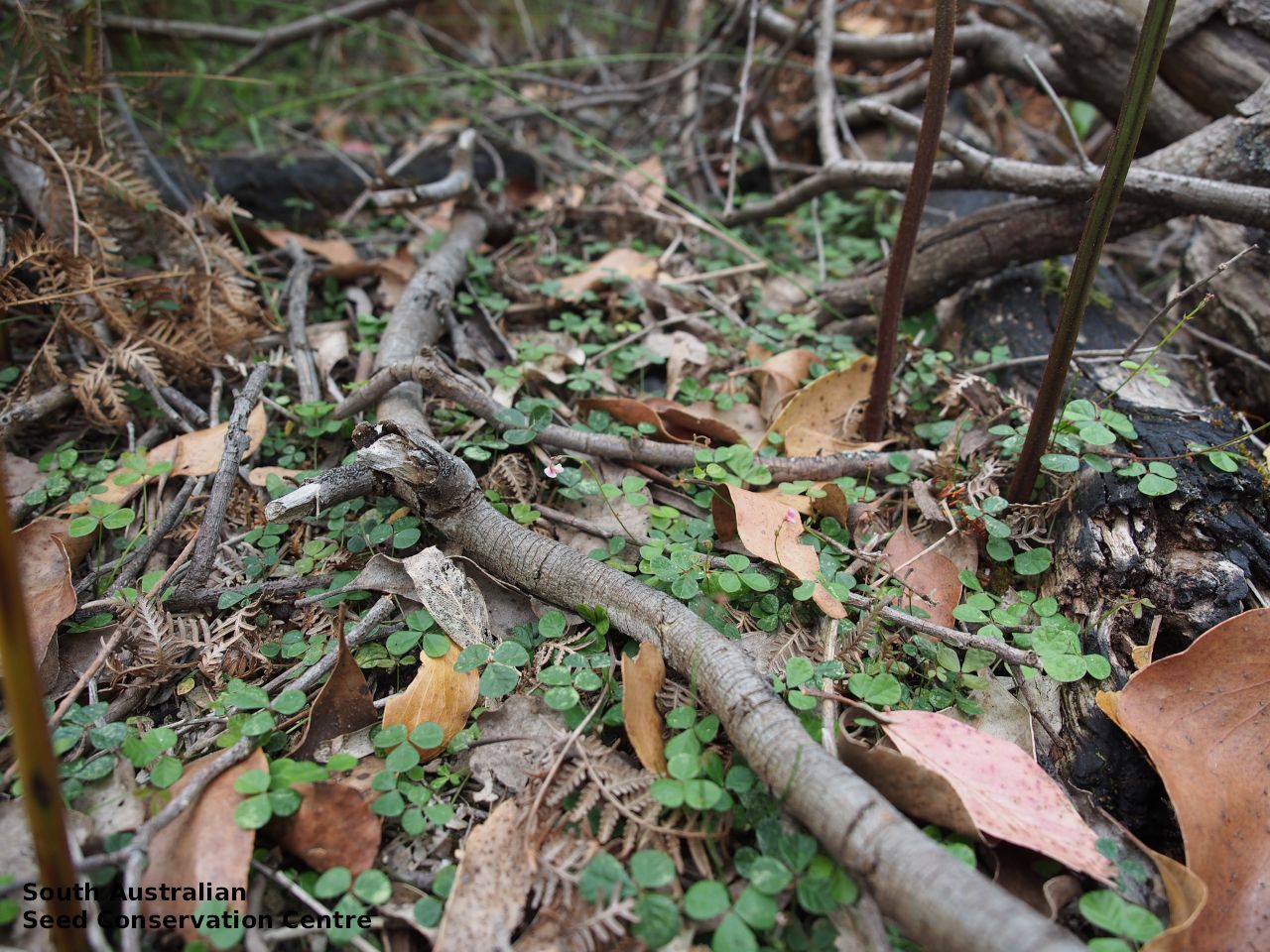














Prior names
Desmodium gunnii
Common names
Southern Tick-trefoil
Etymology
Desmodium from the Greek 'desmodum', meaning a little chain, possibly alluding to the way the individual seedpod segments are attach together into a long pod. Gunnii named after Ronald Campbell Gunn (1808-1881), a pioneer botanist and scientist in Tasmania and collector of the type specimen.
Distribution and status
Found in the lower South-east in South Australia, growing in sclerophyll forest and woodland. Also found in Queensland, New South Wales, Victoris and Tasmania (and Papua New Guinea to New Caledonia). Native. Rare in South Australia. Very rare in Tasmania. Common in the other states.
Herbarium region: South Eastern
AVH map: SA distribution map (external link)
Plant description
Prostrate or ascending herb with weak stems to 50 cm long, sometimes rooting at nodes, glabrous or with a few short hairs. Leaves mostly trifoliolate with leaflets obovate to orbicular, to 20 mm long and 15 mm wide, upper and lower surfaces with sparse soft curved hairs. Inflorescence an erect terminal spike to 15 cm long with 4–10 small pink fading to white flowers. Flowering between October to March. Fruits are hairy, semi-flattened pod to 20 mm long, constricted between each segment. The pods are loments, that is each seed is dispersed individually enclosed in its segment. Seeds are yellow to orange bean-shaped seed to 3 mm long and 1.5 mm wide. Seed embryo type is investing.
Seed collection and propagation
Collect seeds between December and April. Collect mature pods that are fat, detached easily and with hard seeds inside. The pods are hairy and will stick hands and clothes. Place the pods in a tray and leave to dry for 1-2 weeks. Then rub the dried pods to dislodge the seeds. Use a sieve to separate any unwanted material. Store the seeds with a desiccant such as dried silica beads or dry rice, in an air tight container in a cool and dry place. From one collection, the seed viability was high, at 90%. This species has physical dormancy that needs to be overcome for the seed to germinate (e.g. nicking or softening the seed coat).
| Location | No. of seeds (weight grams) | Number of plants | Date collected | Collection number Collection location | Date stored | % Viability | Storage temperature |
|---|---|---|---|---|---|---|---|
| BGA MSB | 1,000 (2.25 g) 1,000 (2.25 g) | 100+ | 13-Dec-2017 | TST1403 South Eastern | 30-Jun-2018 | 90% | -18°C |
Number of plants: This is the number of plants from which the seeds were collected.
Collection location: The Herbarium of South Australia's region name.
% Viability: Percentage of filled healthy seeds determined by a cut test or x-ray.